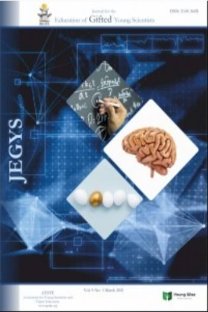Enhancing Grade 12 Students’ Critical Thinking and Problem-Solving Ability in Learning of the STS Genetics and DNA Technology Unit
This study reported grade 12 students’ critical thinking and problem-solving ability in learning and innovation skills in genetics and DNA technology unit through science technology society (STS) approach. The participants were 43 grade 12 students in Maung, Khon Kaen, Thailand. The STS unit has been taught by the researcher for 3 weeks. The Genetics and DNA Technology unit were provided learning activities through STS approach in framework of Yuenyong (2006) based on 5 stages. These included (1) identification of social issues, (2) identification of potential solutions, (3) need for knowledge (4) decision-making, and (5) socialization stage. Students’ critical thinking and problem-solving ability was collected during their learning by participant observation, students’ discussion and questions, worksheets, students’ behaviour, and students’ performance. The findings revealed that the Genetics and DNA technology unit on the STS approach are promoted students’ critical thinking and problem-solving ability. Not only indicated that the solution raised from the problem that lead to solving through critical thinking and problem-solving but also could be mentioned that students developed their ability of critical thinking and problem-solving while they learned STS of GMO issue. These finding would be a good practices for teaching biology through STS approach to who may take further applications for science teaching and learning.
Keywords:
critical thinking, problem solving STS, Genetics,
___
- Chantaranima, T. and Yuenyong, C. (2014). The Outcomes of Teaching and Learning About Sound Based on Science Technology and Society (STS) Approach. Procedia - Social and Behavioral Sciences, 116, , 2286 – 2292.
- Klahan, T. & Yuenyong, C. (2012). An Analysis of Grade 12 Students’ Technological Capability in Learning about Electromagnetics through Science Technology and Society Approach (STS approach) Procedia – Social and Behavioral Sciences, 46, 5085–5093.
- National Science Foundation. Science of Innovation (2013). Retrieved from https://www.nsf.gov/news/special_reports/innovation/whatisinnovation.jsp
- P21 Partnership for 21st century learning. (2015). P21 Framework definitions. The Partnership for 21st century learning, 1-9.
- Seattha, P., Tupsai, J., Sranamkham, T., and Yuenyong, C. (2015).Students’ view on STEM in learning about circular motion through STS approach. AIP Conference Proceedings, 1775, 2016, 1-8.
- World Economic Forum. The skills needed in the 21st century. Retrieved from https://widgets.weforum.org/nve-2015/chapter1.html,
- Yuenyong, C. (2006).Teaching and Learning about Energy: Using STS approach. Thesis of Doctoral Degree in Science Education, Kasetsart University
- Yuenyong, C. (2013). Enhancing Scientific Literacy in Thailand. Global Studies of Childhood, 3(1), 86-98.
- Yuenyong, C. & Narjaikaew, P. (2009). Scientific Literacy and Thailand Science Education. International Journal of Environmental and Science Education, 4(3), 335 – 349
- Başlangıç: 2013
- Yayıncı: Genç Bilge Yayıncılık
Sayıdaki Diğer Makaleler
Muhammad Syawal AMRAN, Saemah RAHMAN, Shahlan SURAT, Abu Yazid ABU BAKAR
Abidin MOHD HAKİMİE ZAİNAL, Salleh AMAT, Mohd İzwan MAHMUD, Mastura Abu BAKAR, Abu Yazid ABU BAKAR
Rizhal RİSTANTO, Puji LESTARİ, Mieke MİARSYAH
Andi THAHİR, Anisa MAWARNİ, Ranta PALUPİ
Rumadani SAGALA, Prasart NUANGCHALERM, Antomi SAREGAR, R. Ahmad Zaky EL ISLAMİ
Anisa Fatkhul JANNAH, Rully Charitas İndra PRAHMANA
